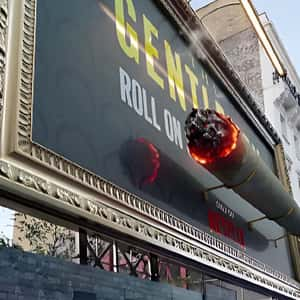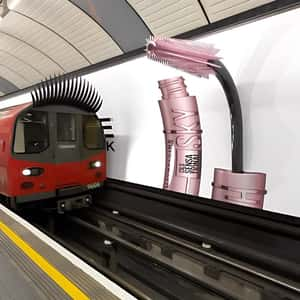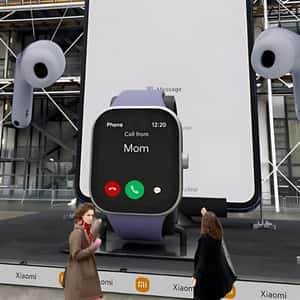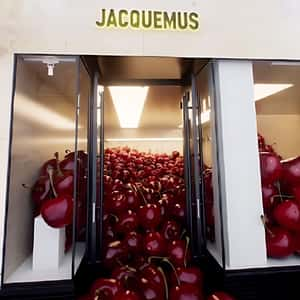Porsche and Lamborghini’s Latest Ads Are Fake – And That’s What Makes Them Go Viral
Discover how Porsche and Lamborghini use FOOH in car advertising to create high-impact, viral campaigns that captivate global audiences.
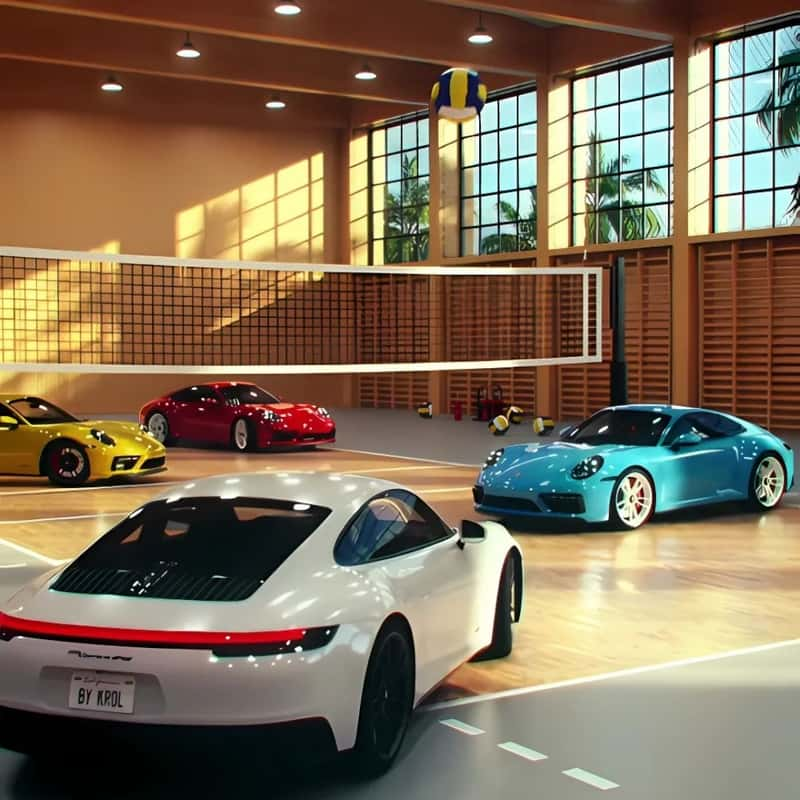
Car advertising has always been at the forefront of unforgettable marketing. Commercials like Volkswagen’s The Force (2011) or Honda’s Cog (2003) are some of the most memorable ads ever made. And in this day and age, it’s no different.
Porsche and Lamborghini are pushing boundaries once again. This time, by leveraging the new trending format Fake Out-of-Home (FOOH). FOOH is a social-first ad format that uses CGI to combine real video footage of places with hyper-realistic 3D animation.
These ads appear lifelike, but they majorly exist on social media. This allows brands to execute bold and memorable campaigns without the limitations of physical locations or production costs.
In a social media-savvy world where consumer attitudes are shifting, with 92% of potential luxury car buyers researching vehicles online before making a purchase, FOOH presents a fresh way for car companies to stay ahead. [1]
In this article, we’ll explore how brands like Porsche and Lamborghini have embraced FOOH to create viral, high-impact campaigns that redefine what is possible in car advertising.
How Porsche and Lamborghini Are Using FOOH in Their Car Advertising to Go Viral
Luxury car brands sell an image, a lifestyle, and a dream. And brands like Porsche and Lamborghini take this to the next level with FOOH. Here’s how these two are changing the game with digital advertising.
1. Transforming Brand Identity into Shareable Experiences Online
Lamborghini is famously known for its bold design and high-performance engineering. And their FOOH campaigns reflect that same energy. With 3D elements, they dive into the fantasy of owning a supercar. The visuals feel nearly otherworldly.
Take their Venice campaign, for example. A Lamborghini is being transported through the canals on a gondola. It’s an unexpected, almost cinematic moment that grabs attention and gets shared. It shows how FOOH can turn a brand’s identity into a viral spectacle.
Porsche, in contrast, focuses on high-performance storytelling. They bring real-world locations to life as vibrant displays for their cars. One standout example is their FOOH campaign at the New Mestalla Stadium in Valencia, Spain.
FOOH in London is doing wild things too — here’s our top picks.
Released around the 2024 Olympic Games, the ad transforms the stadium into a high-speed racetrack. Then, a lineup of Porsche sports cars weaves through obstacles in front of a packed audience.
By blending CGI with real footage, the campaign strengthens Porsche’s connection to elite sports while creating an immersive, larger-than-life experience for its audience.
This is a prime example of how FOOH can push creative boundaries and redefine brand storytelling in ways traditional ads can’t.
2. Creating Surreal Moments That Blur Fiction and Reality
A good FOOH ad for car brands makes people question what’s real – which is exactly what gets them talking. Even though audiences know these ads aren’t real, that’s what makes them so entertaining.
The exaggerated visuals and reality-bending concepts make a simple marketing campaign exciting. People want to engage, react, and share them.
Take Lamborghini’s FOOH ad in Dubai Mall, for example. The ad shows a man casually pushing an oversized shopping cart stacked with gifts. On top of the pile, a full-sized Arancio Borealis Lamborghini Revuelto sits. It’s wrapped in a red ribbon, like just another present.
The CGI-driven illusion makes the scene feel both surreal and oddly believable, proving how FOOH can make even the most over-the-top ideas feel right at home in a real-world setting.
3. Designing Ads That Go Viral Organically
The best FOOH campaigns – or really, any good marketing campaign – do more than just show off a product. They play on our curiosity, the need to share cool things, and the joy of seeing the unexpected.
Lamborghini and Porsche understand this better than most. Their ads don’t just rack up views; they get people talking. By making their campaigns look almost too wild to be real, they create moments that feel bigger than another car ad. And in the age of social media, that’s everything. The more people comment, debate, and share, the further an ad spreads.
Take Lamborghini’s shopping cart ad, from before. Nearly 1.5 million likes show that people enjoy this fun, reality-bending content. If an ad makes people stop and wonder, “Wait, is this real?” while also making them talk about the brand, it has already done its job.
The best FOOH campaigns don’t just sell cars. They create moments people can’t help but share.
FOOH is making waves in movie marketing too. Here’s how.
4 Reasons Why FOOH Car Ads Go Viral
There’s a formula behind why some car ads rack up millions of views while others fade into the background. It’s not about showing off a sleek design or a powerful engine – it’s about creating a moment that sticks.
Porsche and Lamborghini make FOOH campaigns that go viral and get people talking. Here’s what makes them work.
1. Makes Car Launches Bigger & More Shareable
A great car advertising launch is all about spectacle, and FOOH ads make that possible without the limits of physical space. Brands can boost their reach by using CGI FOOH ads. These ads can be just as big, or even bigger, than a private event that shows off a new model.
Take this FOOH ad from Porsche as an example. It kicks off with a green Porsche 911 floating down onto a rooftop, gently carried by a bunch of orange balloons.
It’s a wild, almost dreamlike scene - something that would be nearly impossible (or ridiculously expensive) to pull off in real life. But with CGI, Porsche makes it look effortless. It’s the perfect example of how FOOH lets car brands go beyond real-world constraints in creating moments that feel just as big - if not bigger - than a traditional event.
2. Turns Events Into Global Brand Moments
Car brands have always relied on big moments—auto shows, racing events, and sponsorships—to showcase their latest innovations. FOOH ads take this a step further by turning these moments into digital spectacles that reach far beyond in-person attendees.
Viral teasers with FOOH can boost speculation before the reveal. These ads help keep the audience engaged and excited about what’s next.
Take Porsche’s FOOH reveal in Munich, for example. The ad opens with a massive Porsche sitting in the middle of Wittelsbacherplatz, completely covered by a gray cloth. The camera slowly zooms in, emphasizing its scale and building anticipation. The tension builds until the reveal, turning a public space into a full-on brand showcase.
With CGI, Porsche transformed a simple city square into an unforgettable social media moment, proving that a car launch doesn’t have to be tied to a single location to make an impact.
3. Elevates Luxury Branding in the Digital Age
Luxury cars have always been about more than just transportation. They represent status, lifestyle, and aspiration. That’s why brands like Porsche and Lamborghini don’t market vehicles; they market a dream.
FOOH can enhance this by making cars feel even more exclusive and unattainable, reinforcing their appeal. A hyper-realistic CGI campaign of a Lamborghini, for example, driving through a dirt road while leaving behind a trail of flowers, makes the product feel legendary and like something beyond what most people can experience in real life.
Emotional storytelling like this is exactly why Valentine’s Day FOOH is so effective.
Traditional advertising for cars can’t always capture that same level of imagination. Billboards are restricted by their locations, and TV commercials often fail to reach the intended audience.
But fake out of home ads allow luxury brands to tell their story in bigger, bolder ways when done right. A well-executed and high-quality FOOH ad can make your cars feel like more than just machines; they become symbols of success, power, and desire.
That’s why investing in top-tier FOOH creators who understand your brand’s tone, aesthetic, and audience is essential when entering the FOOH space.
Discover the best FOOH creators by browsing through our FOOH Library!
4. Reaches the Next Generation of Car Buyers
While traditional ads like magazines and TV are still effective in reaching older buyers, the next generation of car enthusiasts engages differently. They have their own humor, standards, and preferred platforms – like TikTok, Instagram, and YouTube. FOOH is the perfect format for getting their attention in a way that feels fresh and authentic.
Instead of relying on traditional advertising for automotive, brands can create hyper-realistic CGI campaigns designed to go viral.
This is especially crucial for younger audiences who may not be able to afford luxury cars yet but are already engaging with the brands. Aspirational buyers look up and engage with luxury car brands online well before they are ready to buy. [2]
FOOH gives them something to talk about, share, and dream about, keeping luxury cars top of mind for when they’re finally ready to buy.
What’s Next for FOOH in Car Advertising?
FOOH has already made waves in luxury car marketing — and it’s only just getting started. As the format evolves, it’s opening up fresh creative opportunities for car brands across the board.
As new digital tools and creative formats emerge, we’re seeing a wave of innovation that’s expanding what car advertising can look and feel like.
FOOH isn’t about replacing traditional advertising. It’s about giving brands more ways to show up – with content that’s bolder, more immersive, and built for the platforms where the next generation of car buyers spends their time.
1. Tapping Into Pop Culture Moments
From celebrity collaborations to influencer activations, car brands are increasingly showing up in places you wouldn’t expect. Music videos, fashion week, gaming livestreams, even memes. It’s not just about showing off the car anymore; it’s about being part of the culture that surrounds it.
FOOH is a perfect fit for this shift. Whether it’s working with celebrities to drop a FOOH stunt or remixing a brand moment in a surreal CGI twist, this approach invites new audiences in — especially those who follow personalities, not just products. For car brands looking to stay relevant in fast-moving cultural conversations, FOOH offers a flexible, high-impact format that makes big statements in unexpected ways.
2. Luxury Car Launches Online
Auto shows will always have their place in luxury car culture. These shows are all about presence, prestige, and being part of an exclusive moment. But today, brands have the opportunity to extend those moments far beyond the physical venue.
FOOH allows car makers to create cinematic, digital launch extensions that reach global audiences. Take Porsche’s golden balloon stunt near the Eiffel Tower – a FOOH activation that marked the 60th anniversary of the 911 with scale, emotion, and a shareable twist.
This kind of marketing is a game-changer. Whether it’s celebrating an anniversary or building hype for a new release, FOOH makes it possible for car brands to create massive moments. They help the moment live longer, spread faster, and reach new audiences in unexpected ways.
3. AR-Powered FOOH Ads
Studies indicate that 71% of consumers would shop more often if they could experience products in AR, and Shopify reports a 94% higher conversion rate for product pages enabled with AR. Luxury car brands are paying attention to these trends.[3] [4]
We’re just starting to see how augmented reality can elevate the FOOH experience – and the possibilities are massive.
Imagine walking through Times Square wearing smart glasses and seeing a life-sized CGI car drift across the buildings, weaving between real taxis. Or exploring a new model parked in front of your favorite café, personalized in your chosen color, with interactive hotspots you can tap to explore features in real time.
FOOH, enhanced by AR, creates a new layer of reality where cars aren’t just shown – they’re experienced. And for car brands looking to stay ahead, this blend of storytelling and interactivity will be a powerful new tool in the mix.
Want to read more about how AR is changing FOOH? Check out this article!
Why Every Car Brand Should Consider FOOH
FOOH is changing the game in car advertising, making it bigger, bolder, and more digital than ever. While luxury brands like Porsche and Lamborghini have led the charge, this isn’t just a high-end marketing play. FOOH isn’t about replacing traditional advertising – it’s about enhancing it.
As digital advertising evolves, more brands will start leveraging FOOH to push creative boundaries. With brands like Mercedes, Volvo, and BMW already exploring the format, interest across the automotive industry is clearly on the rise, and more are sure to follow.
When combined with traditional ads or in-person events, these campaigns extend reach and keep brands top of mind long after the initial launch.
In a world where attention is currency, FOOH is a must-have in the marketing mix for brands to stay relevant. It’s time to think beyond the showroom and meet future car owners where they are – on the platforms they use daily.
With ads that entertain, surprise, and showcase cars in ways never seen before. The question isn’t if more brands will start using it, it’s who will do it best.
Want to check out more FOOH Ads in Automotive? Check out our industry collection of the biggest car brands right here!
